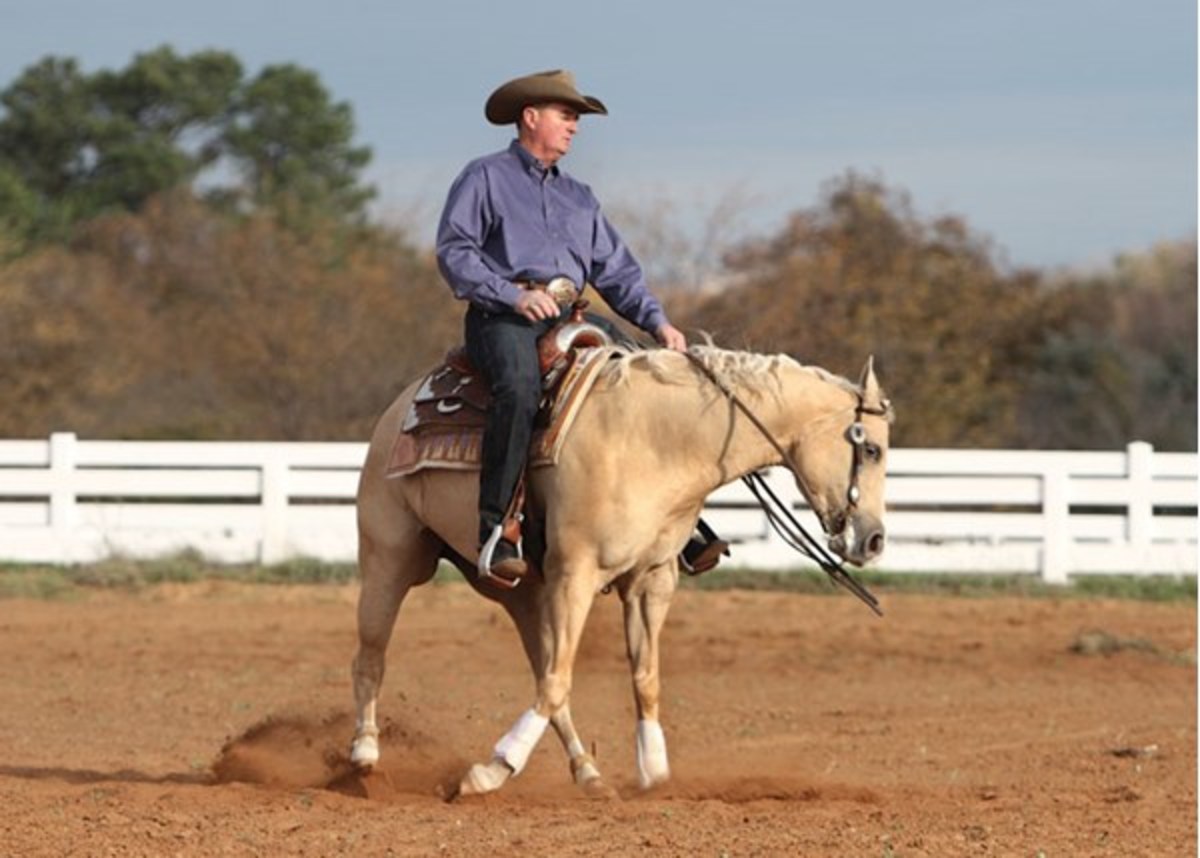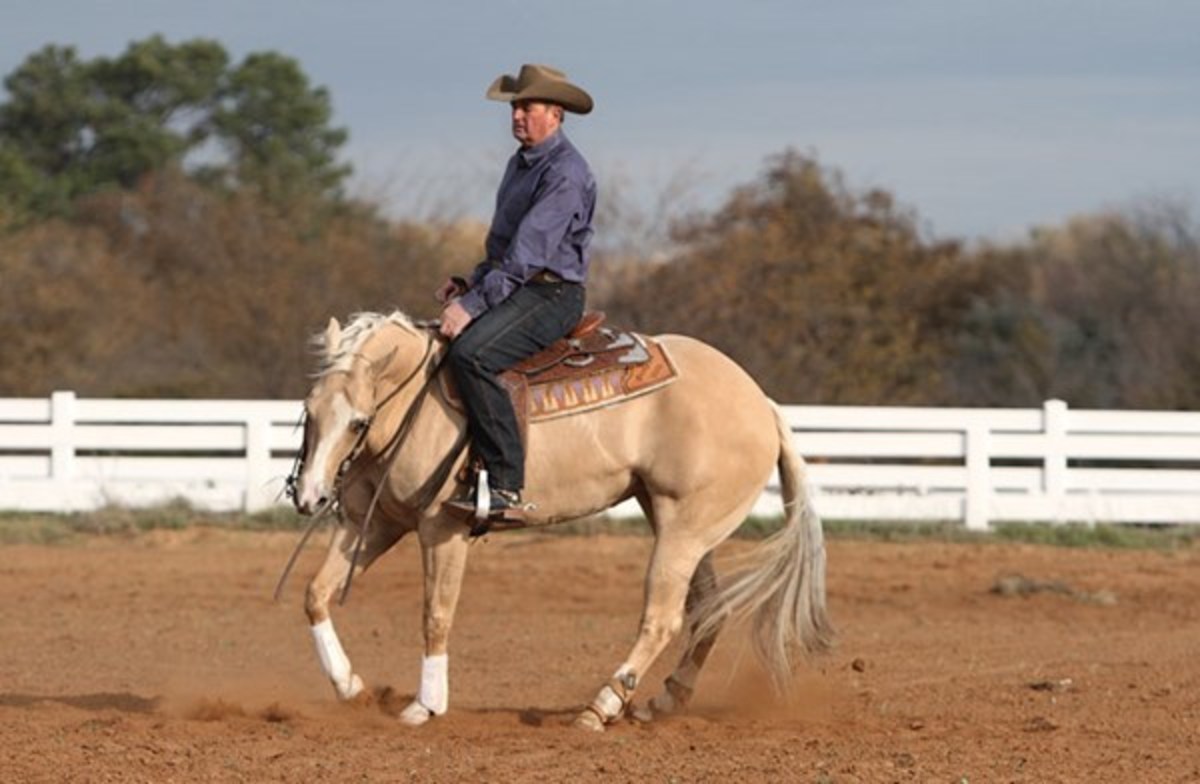While minor misbehaviors may seem insignificant, they can quickly become much bigger problems if you don’t immediately correct them. And on something like a reining pattern, where smoothness and precision are keys to your success, a horse that anticipates his maneuvers can send your score plummeting. Further, one simple mistake can negatively affect your timing, rhythm, and flow throughout the remainder of your pattern.
Here, I’ll discuss three common bad habits seasoned horses often commit. Then, I’ll provide you with simple fixes for each, so you can thwart your “know-it-all” before he takes control.
Cheat Behavior #1: Anticipating a Spin Series
Anticipating a spin series is another common bad habit, seen when the horse jumps into the turn before the rider cues him. Often, when a veteran performer feels the rein on his neck—even slightly—he’ll dive into the turn series, immediately spinning as fast as he can. Instead, you want your horse to step precisely into the spin series, and increase his speed after achieving several balanced, correct turnarounds.
In other instances, seasoned horses won’t move off the outside rein at all. Such a horse instead will turn his head in the direction of the rein pressure as he starts to spin, and throughout the turnarounds his body will be out of position, resulting in a poor spin series. A responsive horse that’s paying attention to his rider’s cues will immediately move off that outside rein to execute a nice spin sequence.
[READ MORE ON SPINS: Stop Your Spin Accurately]
Fix: With a horse that commits either of the aforementioned bad habits, it’s imperative to teach—or re-teach—him that he’s not always going to dive into a lightning-fast spin series when he’s positioned to do so. With a relaxed seat and a light feel of his mouth, set him up as if you were going to perform a spin series. Then, quietly stand there for a few moments. Next, gently place your outside rein on his neck, ask him to turn one revolution, and then ask him to stop and stand quietly. Repeat this exercise several more times in the same direction; then, reverse, and do it in the opposite direction—only doing one turn each time.
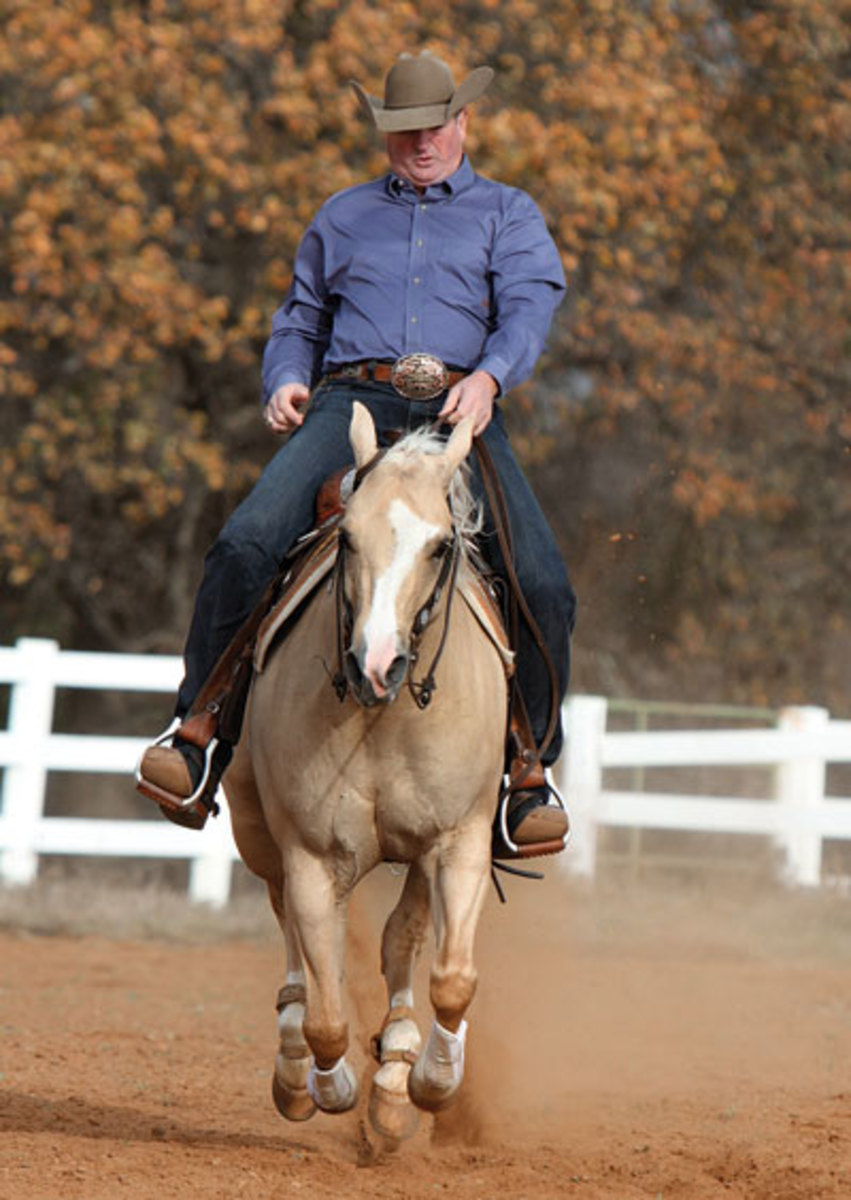
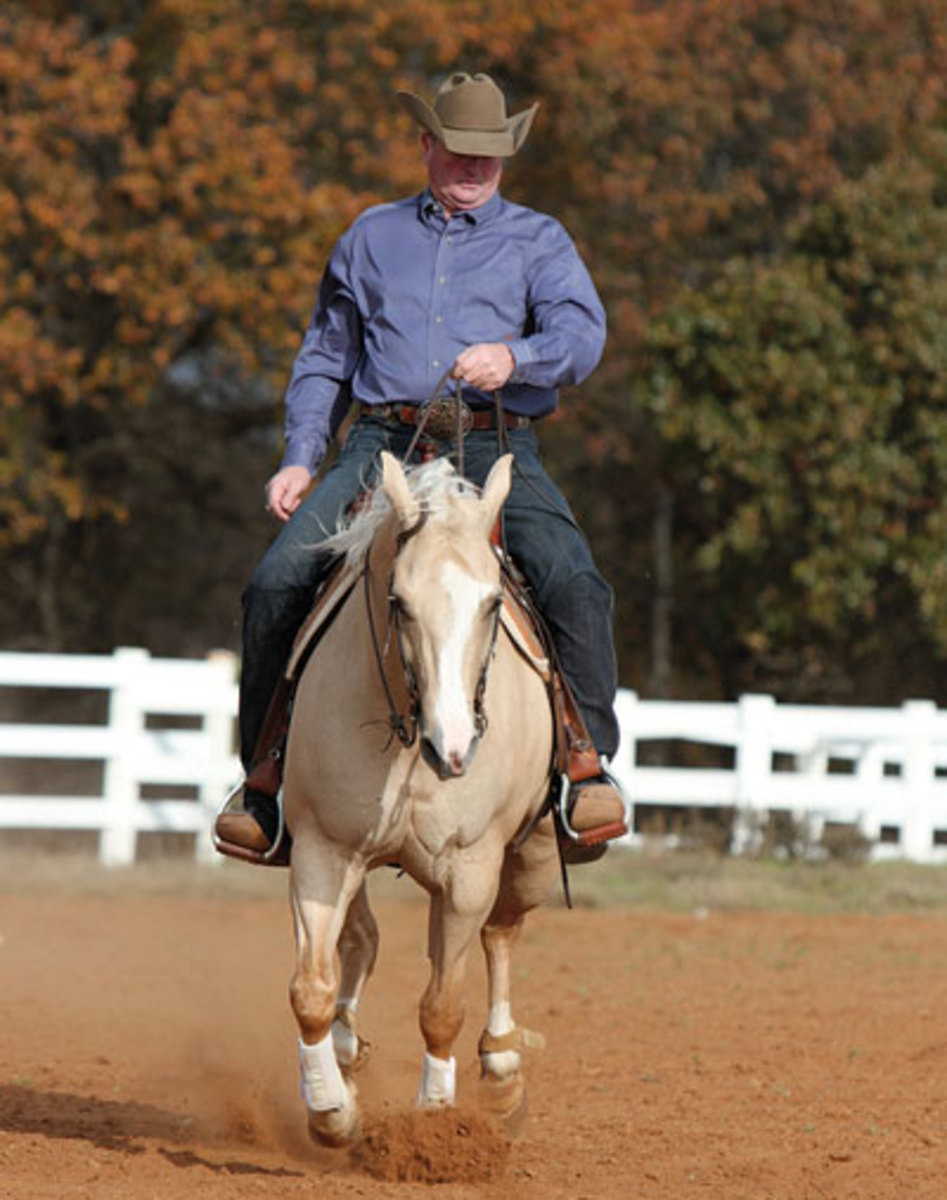
Simply doing one revolution will encourage your horse to step smoothly into the turn and execute a flowing, correct turnaround at a moderate rate. This way, your horse won’t think that every time you set him up for a spin series, he must turn many times at a high rate of speed. One quiet spin will help him relax and realize that it’s not a race. For one reason or another, some horses tend to jump into a spin series more readily in one direction than the other. If this is the case with your horse, work more on the side he anticipates most often.
As you practice this exercise, make sure you’re sitting square on your horse. Don’t lean to the inside or outside of your turn, as your unbalanced weight will prevent your horse from turning well. Also, make sure that your inside shoulder is lifted to prevent you from sinking into the turn.
You can add variety to this exercise and further engage your horse’s mind by trotting or jogging a small circle several times; then, come down from the jog, stop, and cue your horse right into a single turnaround. Stop for a few seconds, and resume jogging a circle—this time, in the other direction. Then, sneak another quiet turnaround in. This will help engage your horse’s mind so he thinks he’s simply jogging at leisure, then “Oh! Let’s do a little turnaround.” It takes the pressure off and encourages him to relax.
Cheat Behavior #2: Anticipating Rundowns and Stops
Veteran performers, especially those that have been shown a lot, often fall into the habit of anticipating or rushing their rundowns and stops. An especially cunning horse will come around the top side of the arena at a moderate speed, and then throw up his head and break into a dead run. If your horse does this, I can almost guarantee you that you’re not going to achieve a nice stop, because your horse won’t have the balance to stop from a break-neck gallop. When your horse is running relaxed and free, he can get into the ground more easily to execute a nice stop. Ideally, you want him to come out of the corner balanced and paying attention to you, and then you can gradually increase his pace, so it appears smooth and natural. He should be at his maximum speed with his shoulders lifted directly before you ask him to stop.
Reining horses begin to anticipate stops due to repetition—doing them over and over again either in an effort to teach them how to stop correctly or to nail that perfect stop. In this sense, the process is somewhat like a double-edged sword. You must teach your horse to stop well, but you have to change up his routine to prevent him from cheating by using the exercises I’ll provide here.
[READ MORE ON RUNDOWNS: Rate & Speed Control]
Fix:
When a horse anticipates a rundown and takes off at a dead run, instead of waiting for your go-forward cue, you must command his attention and direct his mind back to you. If your horse lurches into a gallop, immediately stop him by pulling up on your reins and sitting up and back; make him stand quietly for a few moments. Then, pick up a slow, cadenced lope for several strides and ask him to stop again. Next, ask him to back up a few steps—attempt to keep his body straight from his head to tail while you’re backing up. If he veers slightly to the left or right, don’t worry too much about it. After your back-up, ask him to lift his shoulders by slightly picking up on your reins and rolling back.
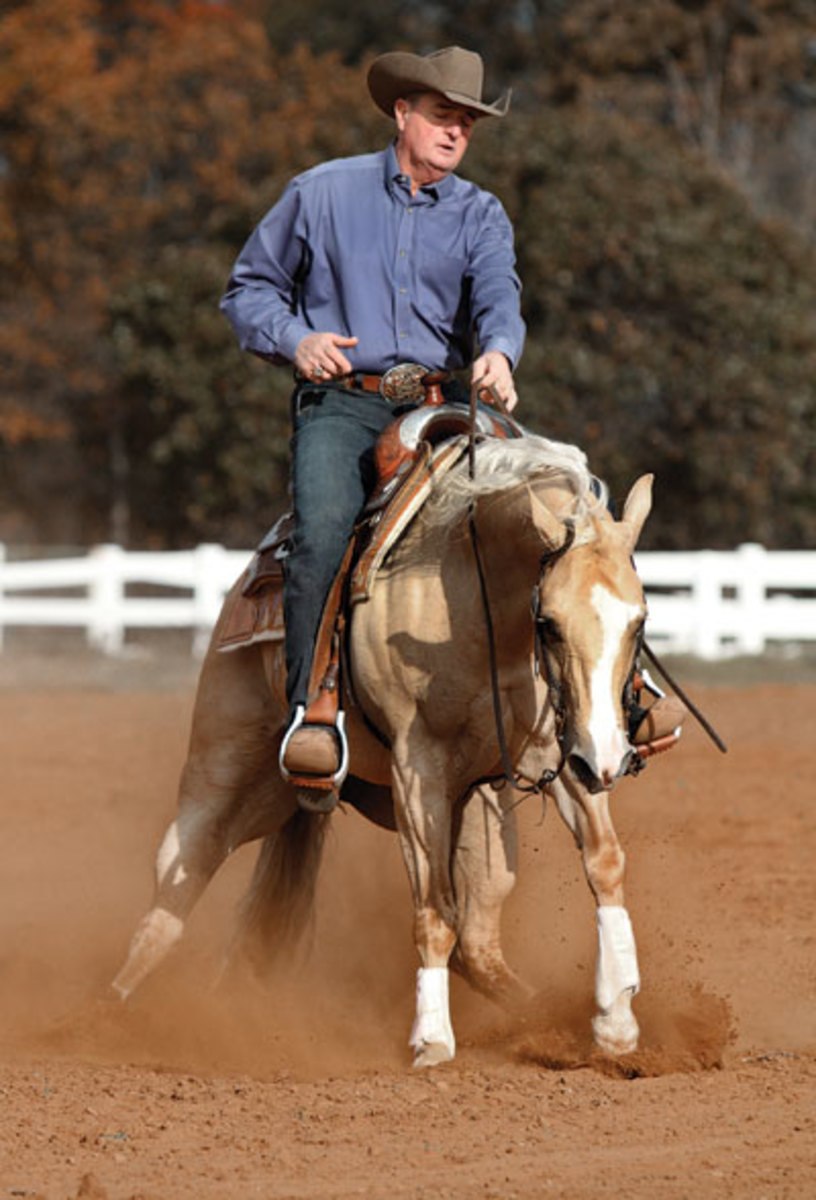
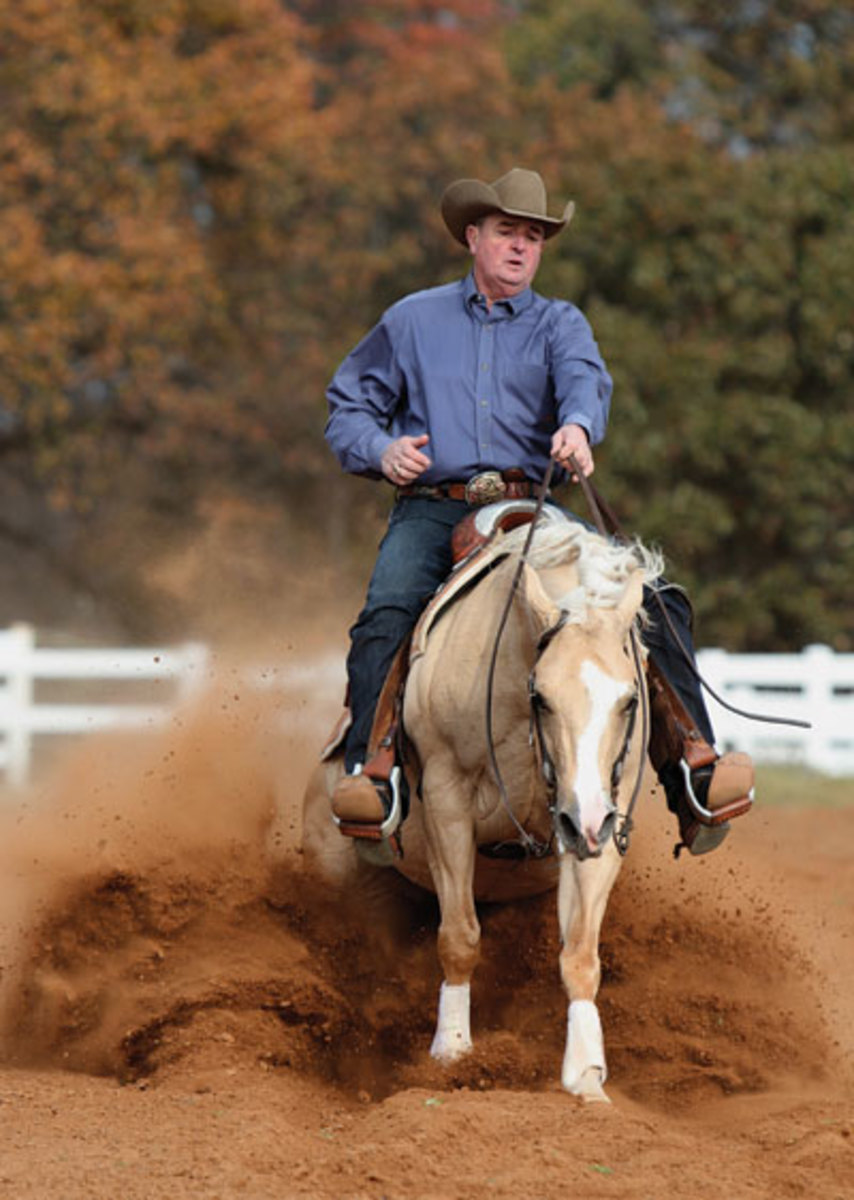
This simple series of stopping, backing, and rolling back will demand your horse’s attention and make him wait on you for the next instruction. Make sure to execute the rollback in both directions, always encouraging your horse to lift his shoulders, so he carefully picks up his feet and comes straight over himself. If you don’t stress this to your horse through the rollback, he will likely take the easy way out, lazily rolling around to face the other direction, while dropping his shoulders and bowing his hips and ribcage to the outside.
You can further change this exercise by stopping, loping around the arena, making a circle, changing directions, and then throwing in a stop, back-up, and rollback. Make sure, however, that you always have complete control of your horse’s movement and body position. Over time, your horse will remember who’s boss and wait on you to cue him for a rundown.
Fix:
To correct a horse that anticipates his stops, you must teach him that every time he runs down the arena, you’re not going to ask him to stop. Start by loping a straight line all the way down the arena, only stopping once you reach the very end. Repeat this multiple times in different places around the arena, making sure that when you do ask him to stop, you do so in a quiet, gentle manner. This will encourage your horse to focus on running fence to fence, instead of going only halfway or three-fourths of the way down the arena and then stopping.
You can also do what I call “looping” your horse. Instead of stopping at the fence, simply pick up on your reins and do a small half-turn and lope back to the other side of the arena and repeat this. Eventually, your horse will learn that he’s not supposed to stop every time you run across the arena. Simply changing up his routine—or what’s become ingrained in his mind—will go a long way in improving his stops.
Pete Kyle, Whitesboro, Texas, specializes in training horses for standard reining competition, as well as freestyle, and has coached numerous youth and amateur riders to world championship titles. He’s won world championships in six associations and was a top-10 money earner for the NRHA in 2012. Besides winning the NRHA open world championship in 2001 aboard Dun It The Hard Way, he’s also a five-time USEF gold-medal winner in freestyle competition.
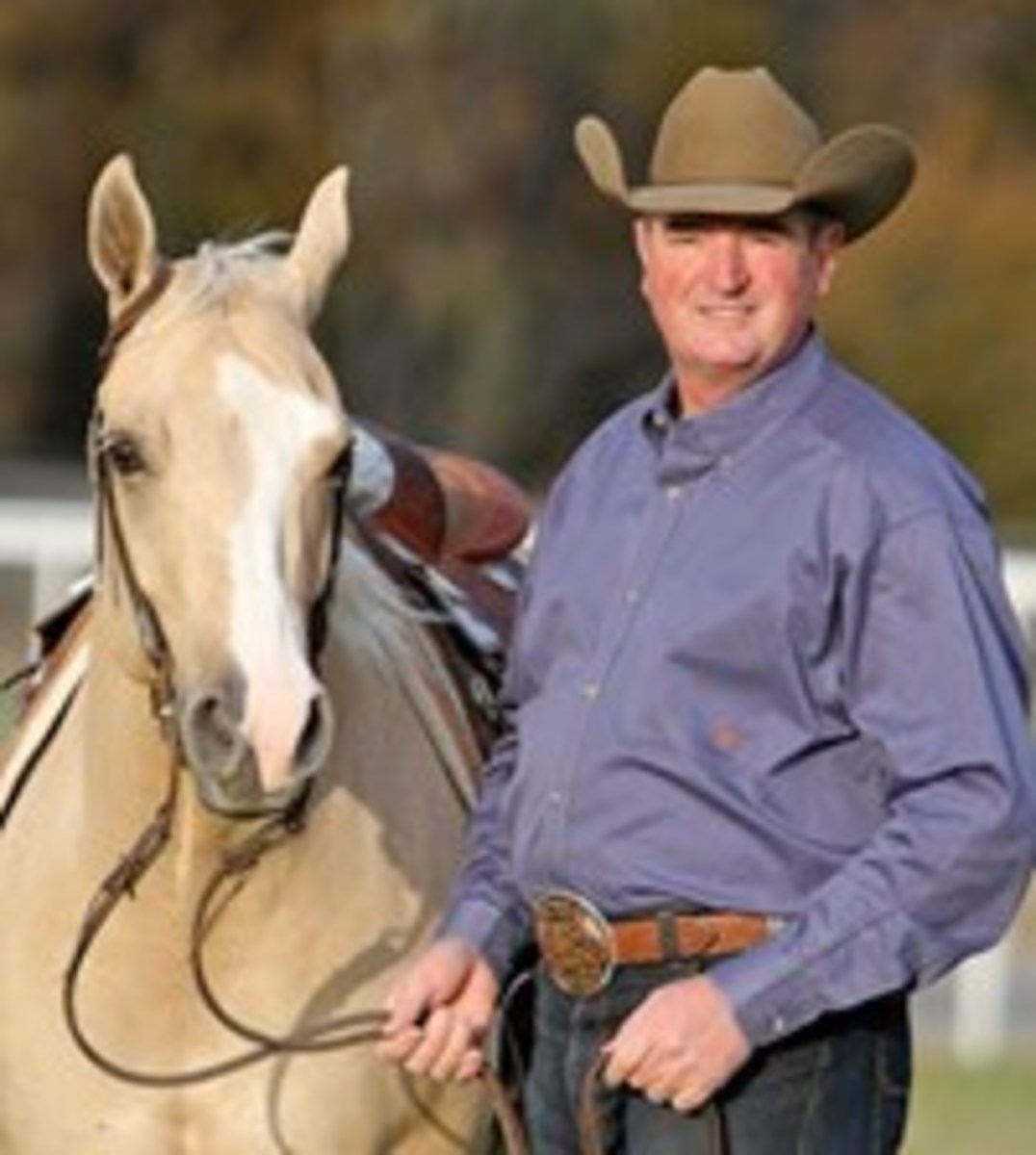
Photos by Alana Harrison
Is your horse becoming sloppy or cheating on his maneuvers, or rushing through them without paying attention to your cues? Maybe he lunges into a spin series before you’ve given him the go-ahead, or perhaps he charges into his rundowns like he’s running the Kentucky Derby. Horses are highly intelligent animals, and it doesn’t take them long to memorize a routine. Specifically, seasoned performance horses get to know their jobs pretty well over time, and eventually they’ll begin to develop bad habits to cheat on their maneuvers.
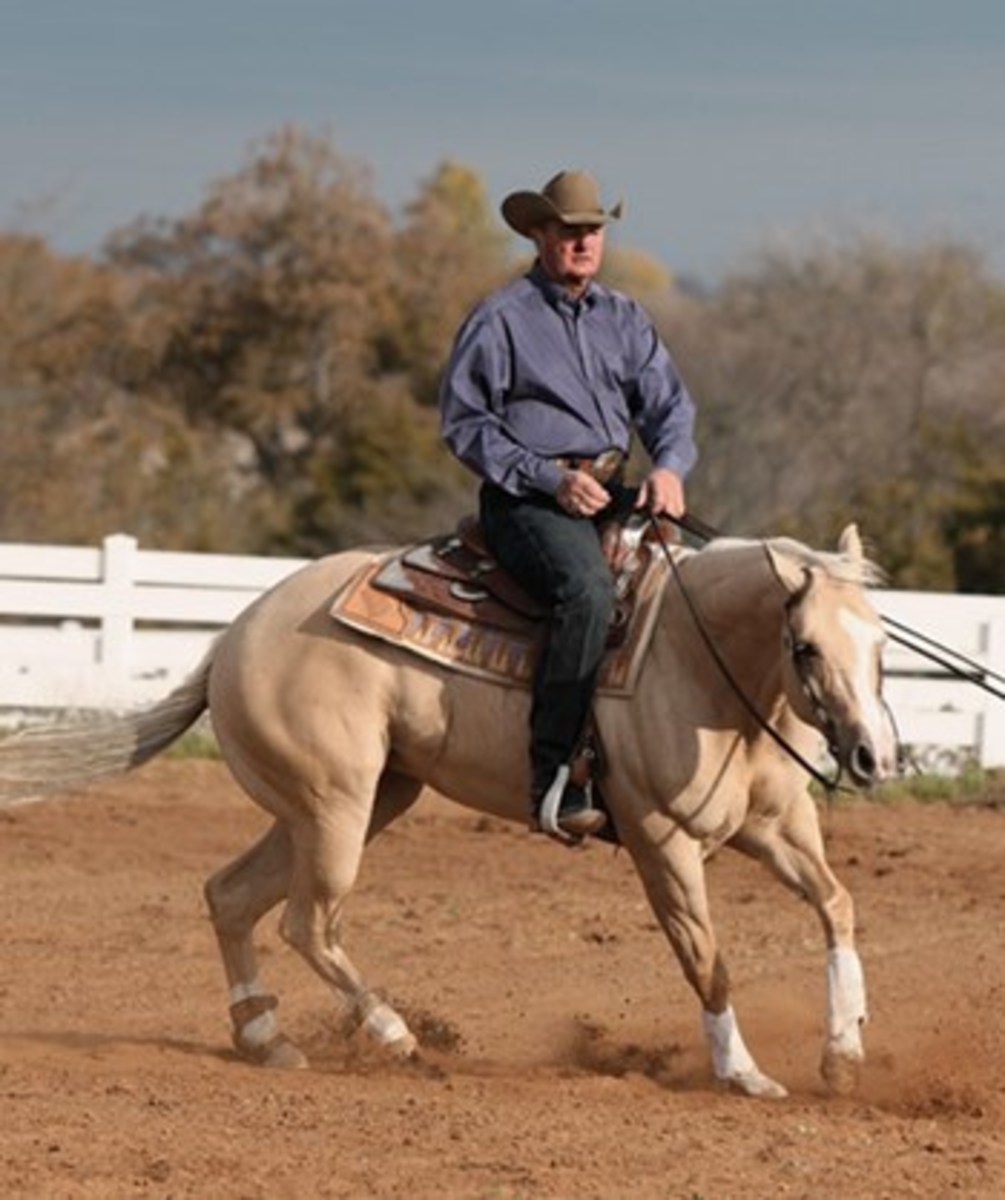
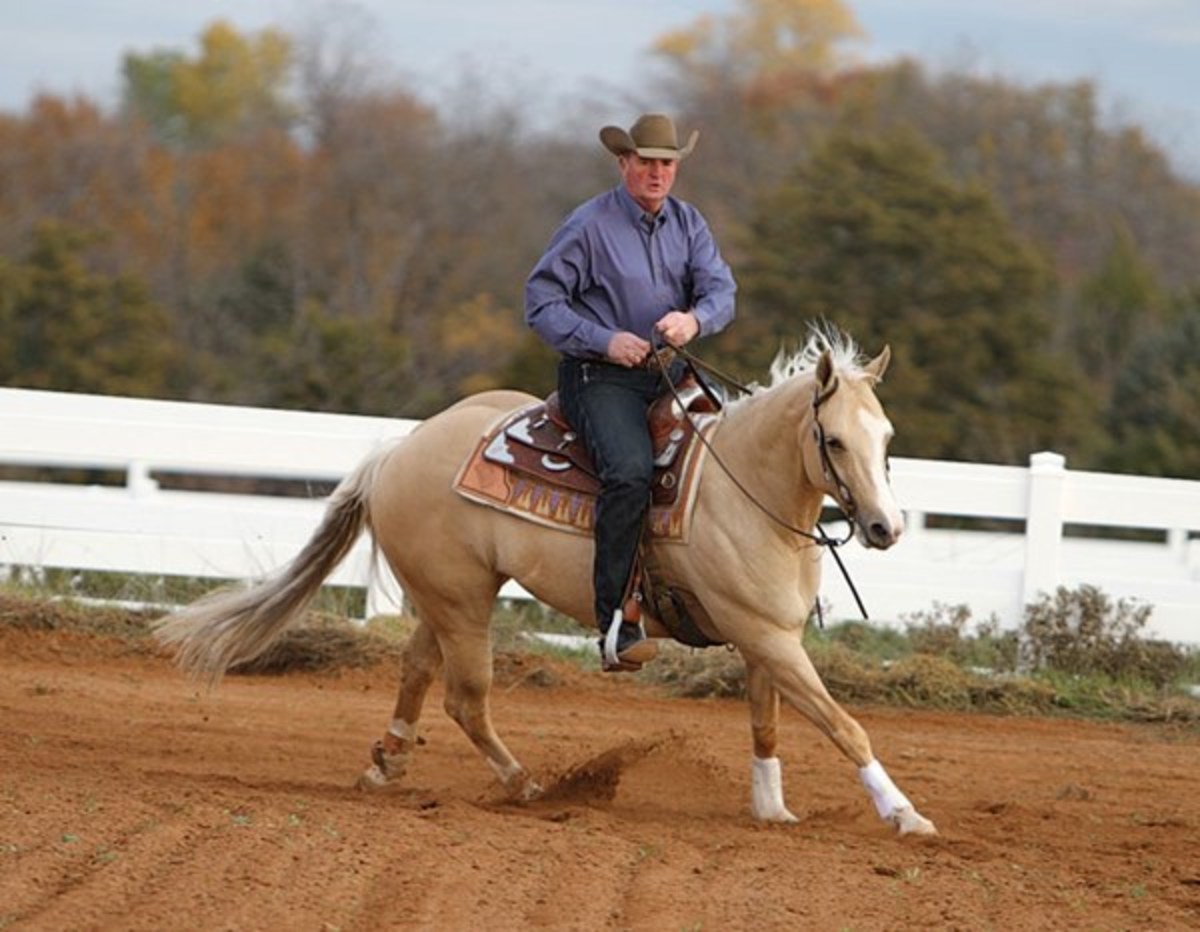
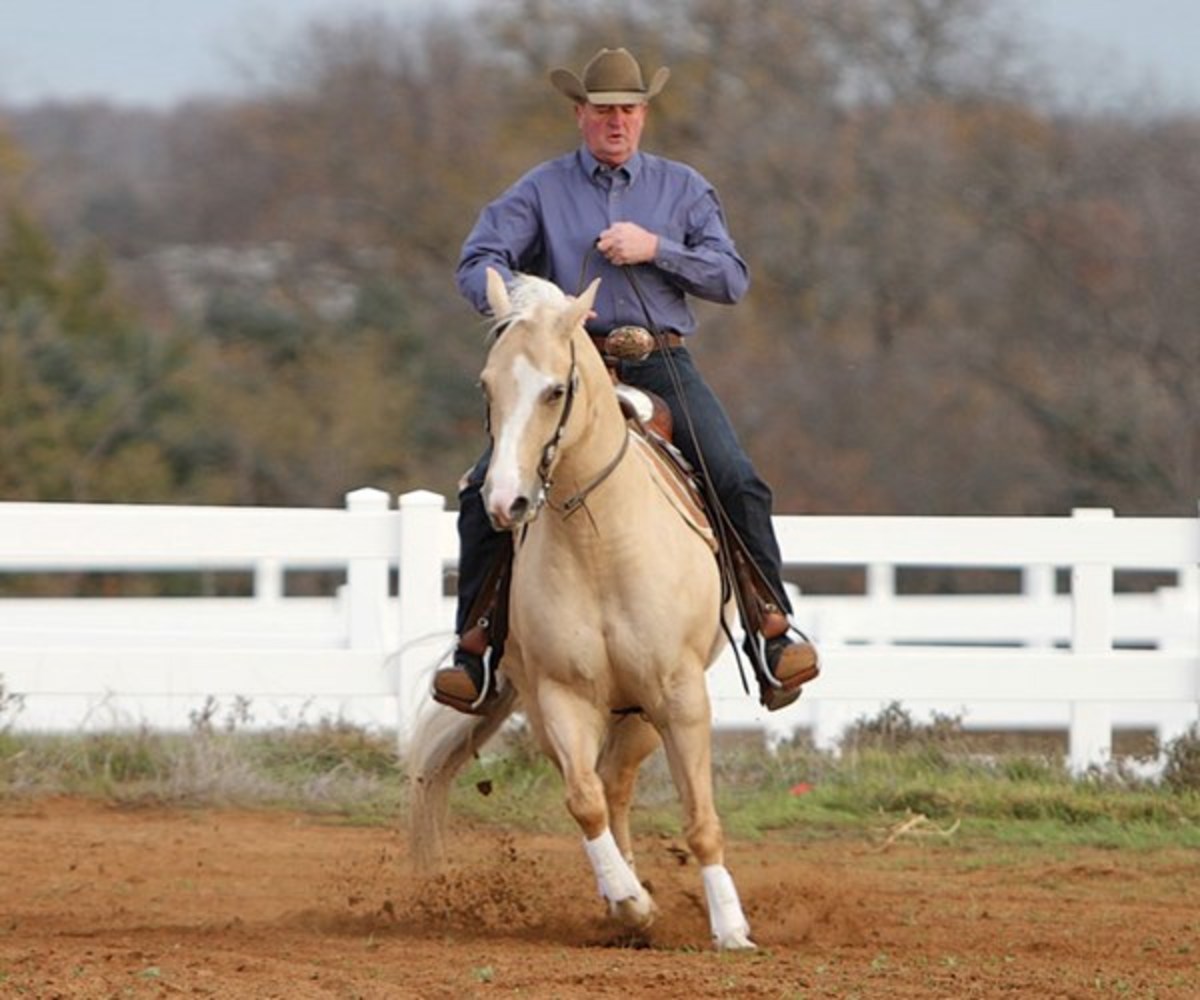
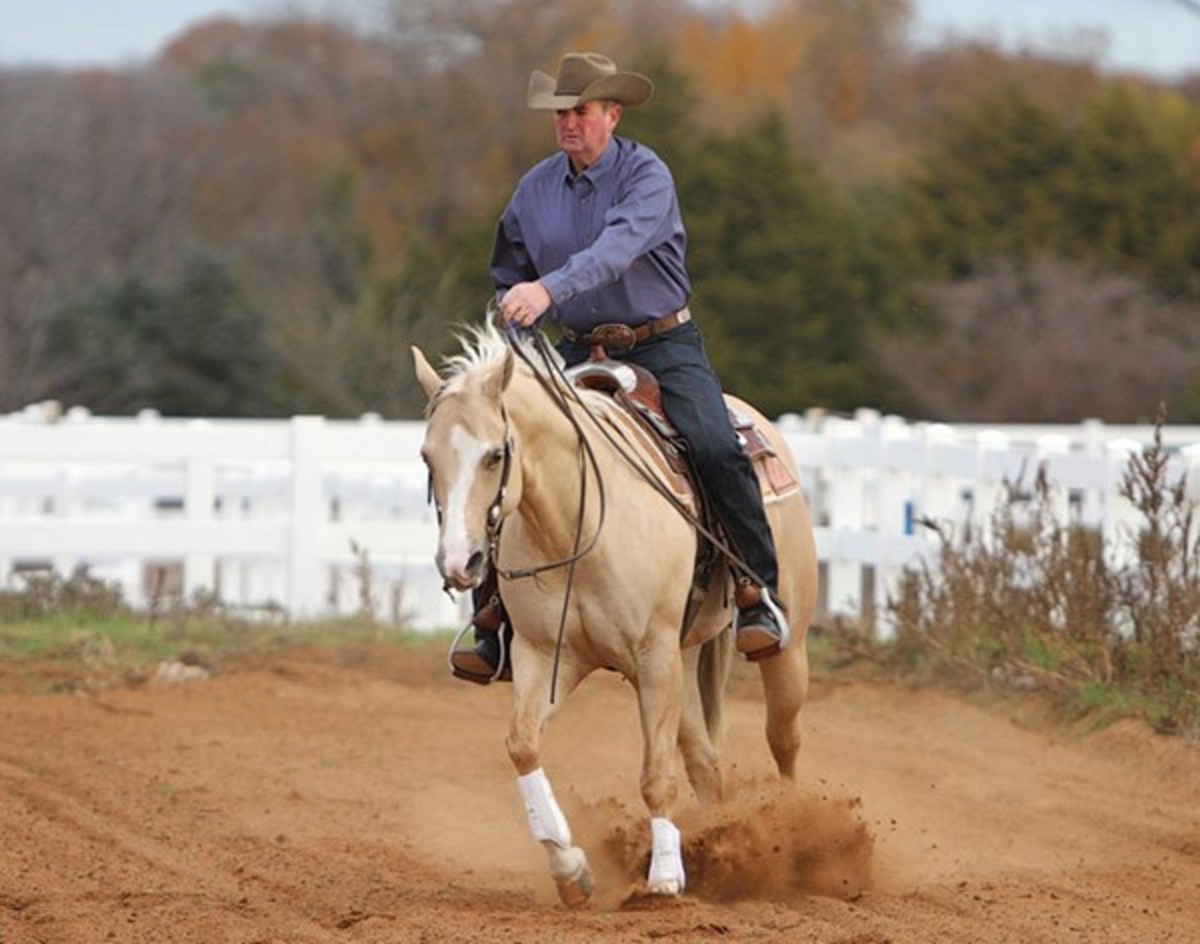
Cheat Behavior #3: Leaning Through Circles
It’s almost inevitable that seasoned performance horses will eventually try to “cheat” on their circles by leaning to the inside or the outside. If your horse veers to the inside, he’s leaning on his inside shoulder, which in turn makes him get heavy on his front end—causing him to lose collection, and also lose the pretty picture judges want to see on circles. When a horse is circling with a good amount of speed and leans to the outside, he’ll come around a corner and his hindquarters and ribcage will veer outward, which will cause him to become unbalanced. When your horse is leaning in either direction on a circle, it not only presents an unattractive picture, but it can also detract from your other maneuvers if your horse is dropping his shoulders and ribcage, leaning on his front end, or is unbalanced.
[READ MORE ON CIRCLES: Precise Circles]
Fix: Instead of working a circle, ride a rectangle. Begin at a moderate lope, then, once you gain confidence, gradually increase your speed. The rectangle should be approximately the same size as your circle—about half of the arena.
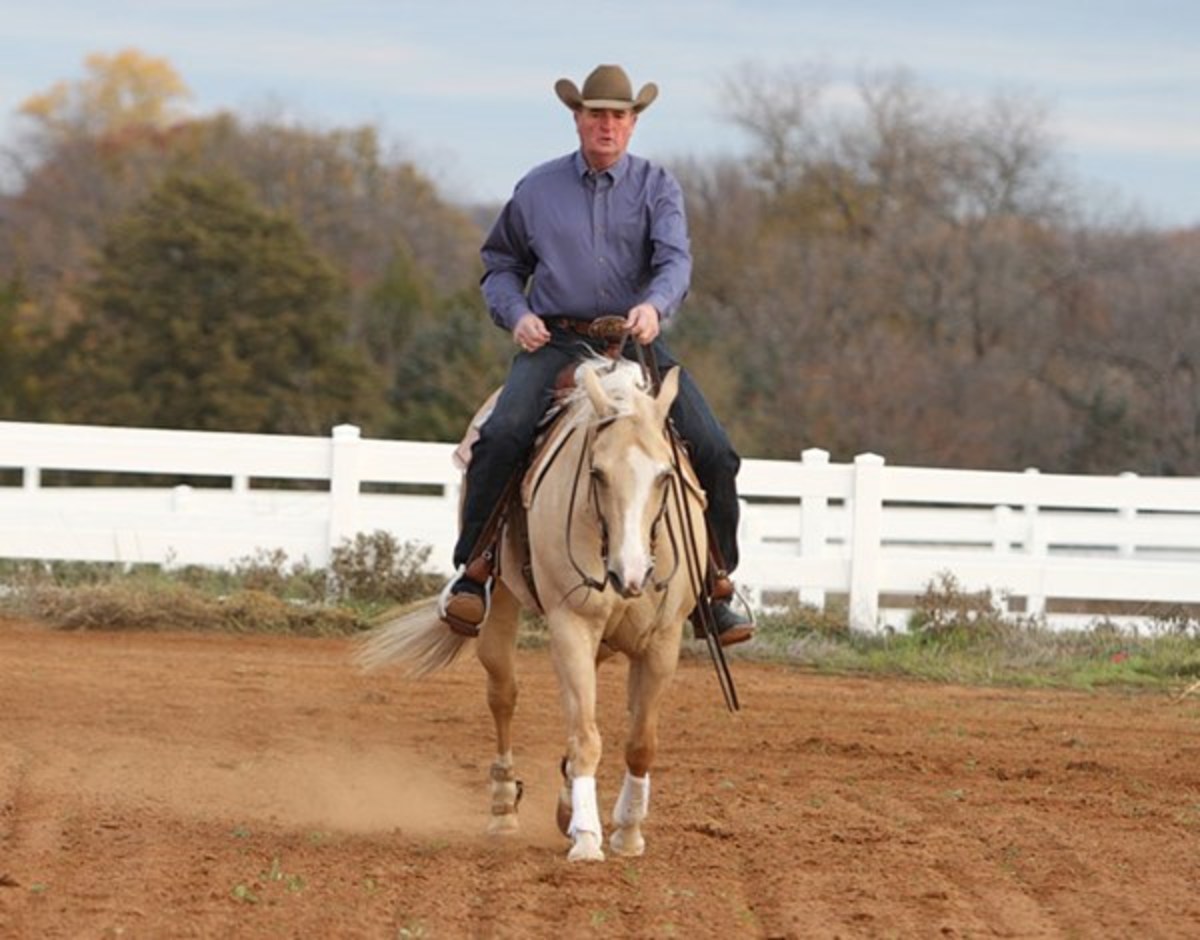
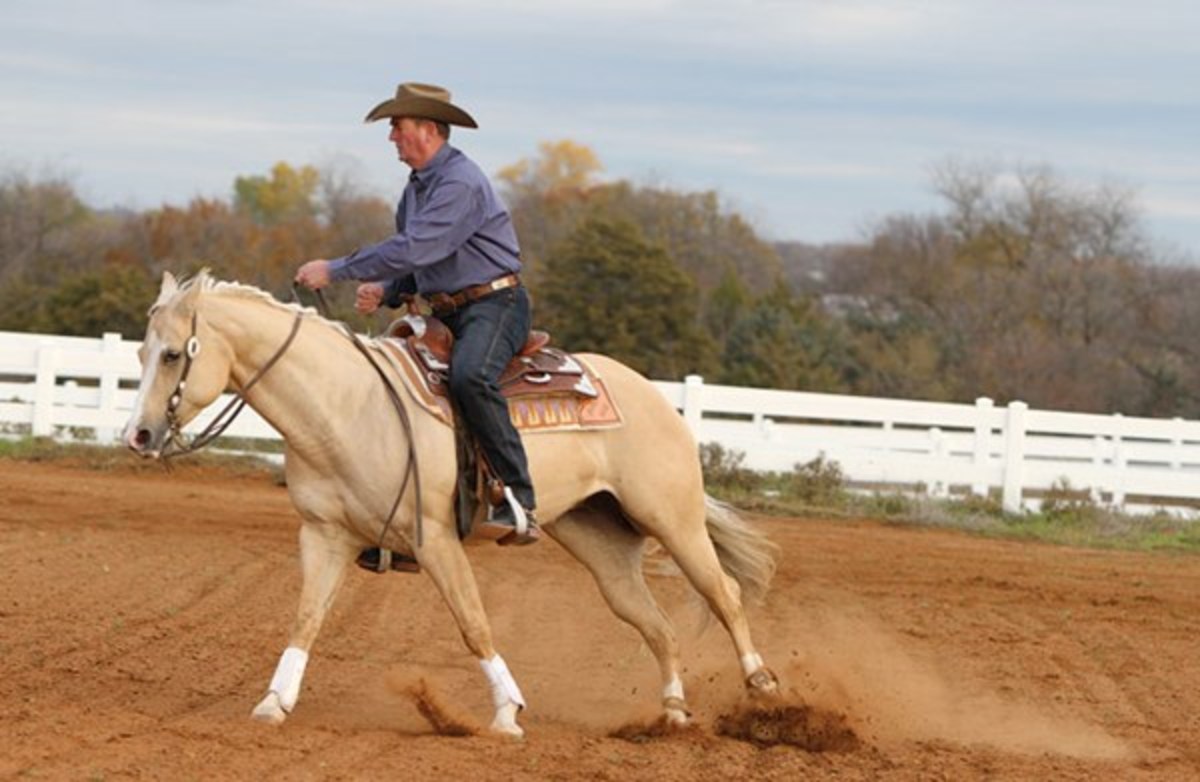
By making your horse lope straight on the lines of the rectangle, you’re encouraging him to keep his body aligned and his shoulders squared, which will carry over to your circles. This also applies through the rectangle’s corners. Instead of rounding the corners as you would on a circle, slightly pick up on your reins and close your outside leg as you approach a corner of the rectangle and make a square turn to the next straight line. The first few times you execute a square turn, do so at a moderate speed to ensure that your horse maintains his balance.
Once you’ve mastered the rectangle in one direction, simply lope straight across the arena, and reverse directions to drill this exercise in the opposite way. Or, you can further change up your horse’s routine by loping three-fourths the way down the long side of the arena and then reversing directions. Anything you can do to change up your horse’s routine will be of benefit. This exercise not only requires your horse to do something different with his body, it forces him to use his mind, as well, which further keeps him fresh and in tune with you.
When executing your rectangles, keep your weight balanced in the middle of your horse’s back. If you lean to the outside, you’ll encourage your horse to lean to the outside. If you lean to the inside, your horse will naturally drop his inside shoulder, become heavy on his front end, and lean to the inside. Keep your body squared, and be consistent with your cues.
Always strive to keep your horse’s shoulders up while keeping his body perfectly straight from his poll to the tip of his tail. Reinforcing this body position will remind him how to carry himself correctly—and will go a long way in improving your circles.
Fix: Two-tracking is another exercise I use to correct a horse that tends to lean in or out on circles. This maneuver enables you to slow your horse’s movements, so you can better focus on his body position and correct anything that may be out of alignment.
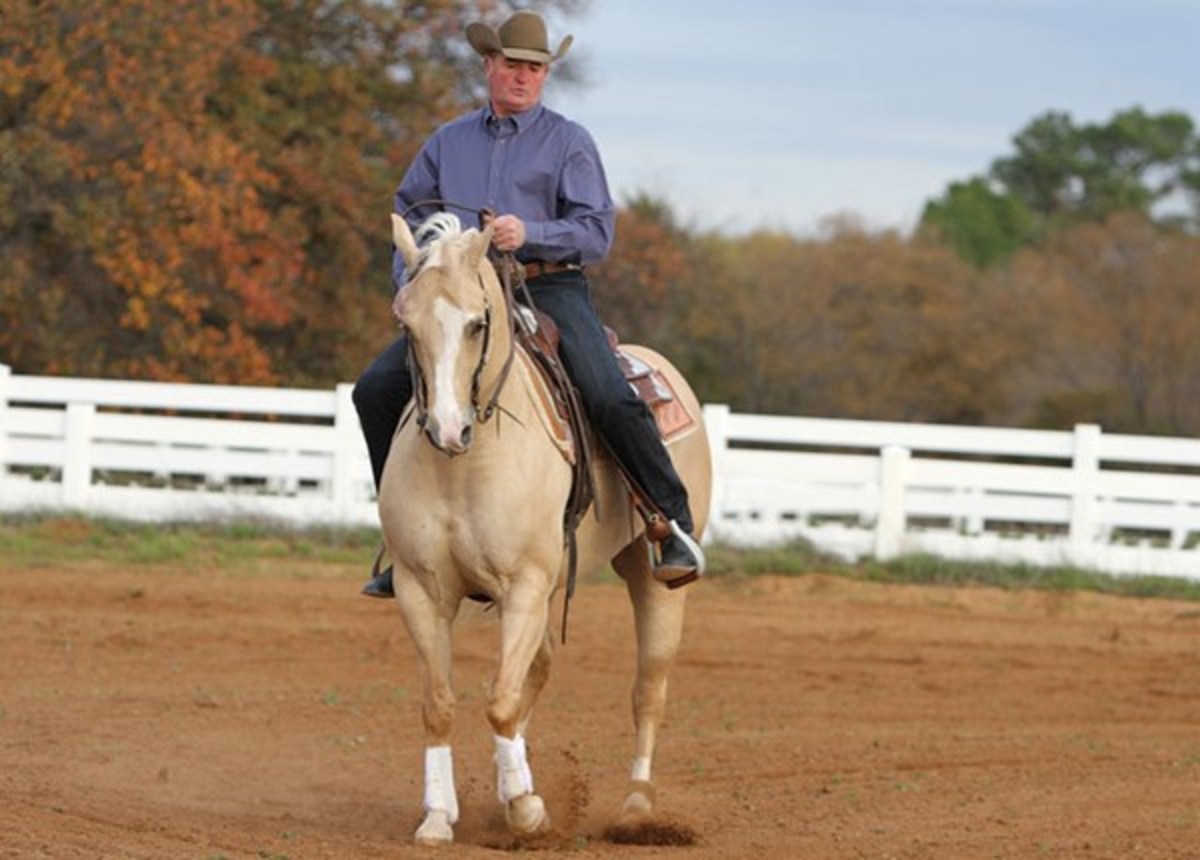
When two-tracking to the left, ask your horse to pick up and hold his left shoulder up, while lifting his ribcage and keeping it in line with the rest of his body. To do this, pick up on your left rein to encourage your horse to lift his left shoulder. Meanwhile, hold your right rein down near your saddle’s pommel and your right thigh, which will help keep your horse’s body straight. Reverse these rein positions if you’re two-tracking to the right.
If you pick up on your left rein without doing anything with your right rein, your horse will likely give his head to the left and bow his body to the outside—the opposite of what you’re trying to accomplish. By using this right-rein position, you can more easily control your horse’s body and keep his head in line with his hindquarters. Instead of falling forward or sideways, your horse will have to pick himself up and maneuver in a collected manner. Remember, with two-tracking, you want to execute a fluid, lateral movement, which will also help supple your horse and keep him soft. Make sure to take your time and track at a moderate pace (don’t rush), so you can be very precise about placing your horse’s body exactly where you want it.
Resuming circles: After you’ve drilled these exercises to the point where your horse willingly and correctly responds to your cues, resume practicing your circles. If your horse begins to lean to the inside or outside, subtly correct him with your reins, while maintaining close contact with your legs. This way, if your horse starts to lean to the inside, you can correct him with pressure from your inside leg and vice versa. Always look where you’re going; I suggest you look about a quarter of a circle ahead of you, and aim to come back to the same place in which you began your circle.
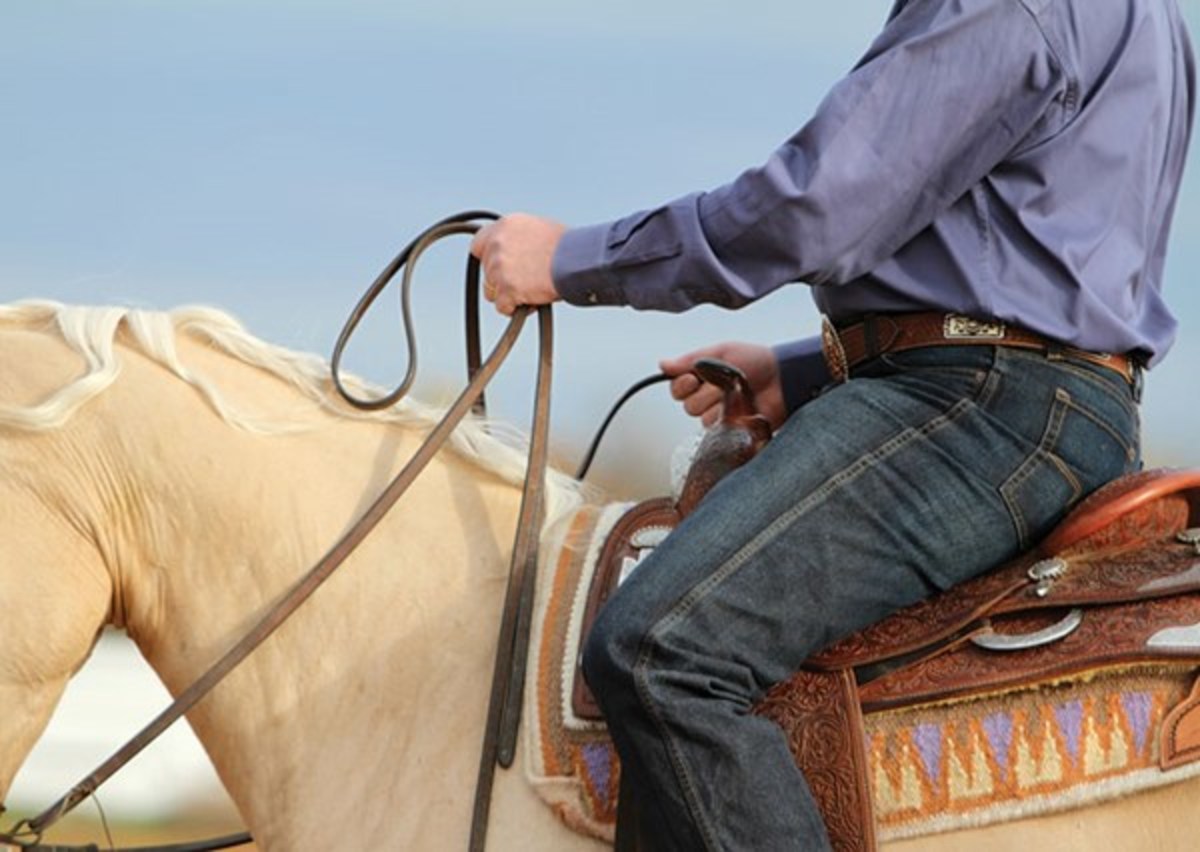
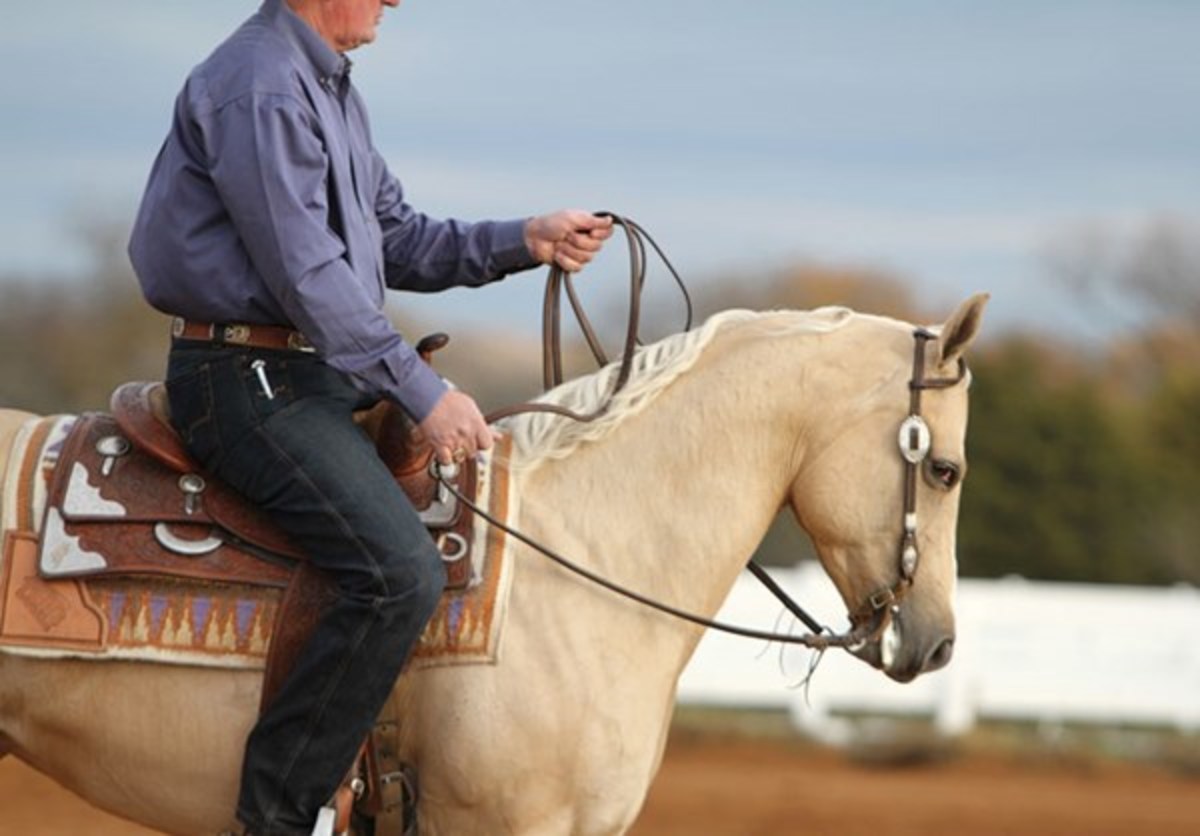
If, however, your horse’s minor leaning begins to occur more often than not, immediately go back to the exercises I described in “Cheat Behavior #1,” to correct him.
